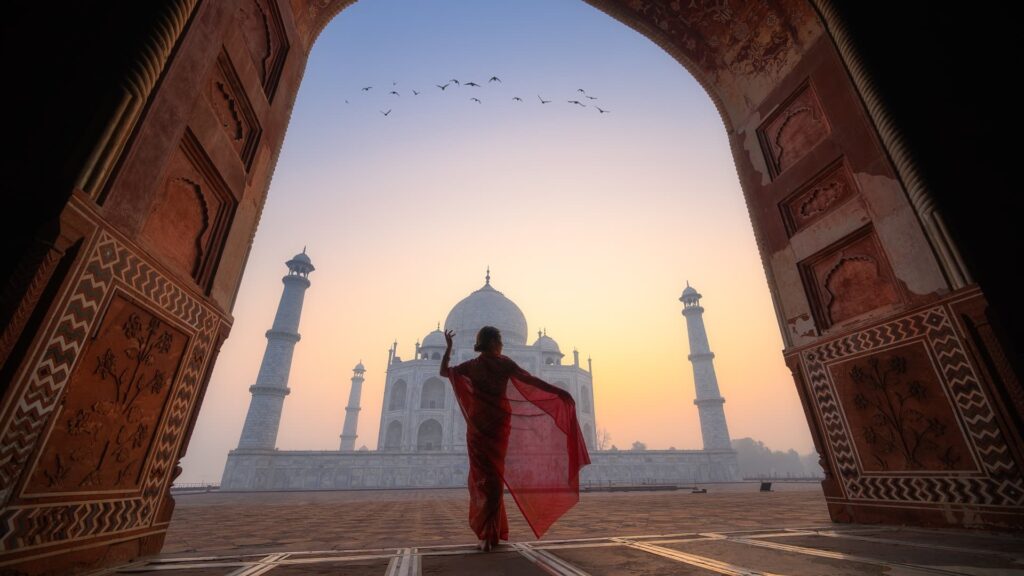The changing face of India’s rich

This report is from this week’s CNBC’s “Inside India” newsletter which brings you timely, insightful news and market commentary on the emerging powerhouse and the big businesses behind its meteoric rise. Like what you see? You can subscribe here.
India is mourning the death of Ratan Tata, the visionary industrialist and philanthropist.
The former chairman of the Tata Group is known for bringing the storied salt-to-software conglomerate to the global stage via a string of high-profile acquisitions.
His strong business acumen led him to become one of India’s wealthiest tycoons.
The billionaire placed 421 in the IIFL Wealth Hurun India Rich List 2022, based on his net worth of approximately 38 billion Indian rupees ($452 million). Another list by Fortune India-Waterfield captured his net worth as 160.4 billion Indian rupees, a figure that includes his stakes in Tata Sons, Tata Steel, Tata Consultancy Services, Tata Motors and Titan Company.
Ratan Tata — along with the Ambani and Adani families — have become household names given their wealth and influence.
They are, however, becoming less representative of the South Asian powerhouse’s growing super-rich population.
A new rich populace
“The previous school of thought was that rich people were just the Tatas, Birlas or the Ambanis. But, that’s changing today — the rich are not just leaders of traditional business conglomerates,” Himanshu Kohli, the co-founder of Indian multi-family office and private wealth manager Client Associates, said.
Speaking to CNBC’s Inside India, Kohli noted that India’s wealthy now come from a swathe of industries.
“Lots of money has been created, whether it is in the sports arena, movies, among celebrities, investment bankers or private equity professionals,” he explained.
Professionals, who have “created substantial value” in their jobs or organizations, are now also making the cut, Kohli noted. These individuals — who are often in the C-suite bracket — can “create $50 to $200 million in wealth over a lifetime,” he said.
Another group of individuals attaining the rich status are “owners of listed companies who have sold part of their shares into the stock market rally, owners of hitherto unlisted businesses who have sold shares in their IPOs and startup founders who have sold their businesses, or shares to multinationals or bigger companies,” said Pramod Gubbi, co-founder of Marcellus Investment Managers.
The comments come as more Indians choose to set up their own company instead of working for an organization. Data from the Lee Kuan Yew School of Public Policy at the National University of Singapore revealed that the number of startups in India rose 71.5% from around 20,000 in 2021, to over 34,000 in 2023.
Many Indian startups capitalized on the private equity boom by selling shares in 2022, prior to the funding winter. Others are now riding on India’s IPO boom to cash out of their startups in the hope of making gains.
“Before the funding winter hit, a lot of startup founders created wealth by selling off their shares. That’s given them a lump sum to invest and become active investors in financial markets. Others are listing now and getting substantial gains. Both moves are giving founders lots of wealth,” Gubbi told CNBC’s Inside India.
Elsewhere, the investment manager also observed that individuals across different ages and professions have benefitted from the stock market rallies in India over the last three to four years.
India’s stock market became the fourth-largest in the world at the start of the year, after overtaking Hong Kong. Since then, markets have been making steady gains with the BSE Sensex index — which represents 30 of the country’s largest and most traded firms on the Bombay Stock Exchange — up around 12% year-to-date, while the benchmark Nifty 50 index is around 13.8% higher.
What is ‘rich’?
There is no fixed definition of “rich” used by wealth managers. However, a widely accepted threshold for individuals in the high-net-worth bracket is 50–250 million Indian rupees. Individuals with wealth exceeding 250 million Indian rupees fall under the ultra-high-net-worth category, Kohli said. Meanwhile, those whose wealth that falls between 10 to 50 million Indian rupees are in the affluent category, he added.
India’s ultra-wealthy population — people with a net worth of at least $30 million — rose to 13,263 in 2023, a 6.1% increase from the prior year, according to Knight Frank. This number is expected to surge 50.1% between 2023 and 2028, the fastest growth rate for UHNWIs in the world, the same reported stated.
Kohli estimates that the UHNWI population is growing at 10% per annum while that of the HNWIs is 16%.
“This means that every few minutes 1 HNWI with a projected wealth of $1 million is born while 3 UHNWIs with upwards of $30 million is born in India every day. That’s the tailwinds happening in our society today,” he said.
What’s also interesting is the shift in age profile of these individuals. Historically, India’s wealthy had a median age exceeding 50. Today, however, seeing millionaires aged 30 or 40 is not uncommon, said Marcellus’ Gubbi.
Another trend, he adds, is that they do not necessarily live in the nation’s metropolises. “The bulk of the accumulation of wealth has happened in bigger cities. Having said that, I think the wealth management industry is also penetrating into tier two and tier three cities,” Gubbi said. Examples of these cities include Pune, Hyderabad and Ahmedabad.
Beyond the city centers, he sees the wealthy coming up in industrial areas such as in the outskirts of Chennai, which are “getting prosperous, particularly with the growth in manufacturing.”
Drivers of India’s wealth
The growth in India’s wealthy population comes in tandem with the nation’s economic progress. The South Asian giant is slated to become the world’s third-largest economy by 2027, assuming its current growth trajectory continues.
“India’s economy is doing well, its stock market is doing well and it is the only other economy after the U.S. to have created wealth in the stock market consistently over the last 30 years since its liberalization,” Gubbi said. The nation’s prosperity, he added, has benefitted both businesses and individuals by enabling “stronger wealth accumulation.”
Another factor fueling the rise in India’s wealthy is a shift from physical assets, such as gold and land, to financial assets like stocks, mutual funds and alternatives, the investment manager observed. The move was driven in large part by a pullback in money generated predominantly through tax evasions and unaccounted transactions in real estate, he said.
The good news is that the move to financial assets brought on “an exponential” growth in wealth as it yielded higher returns, he added.
Implications of a wealthy populace
The legions of the wealthy in India are consequential to the nation’s growth story. Their outsized influence relative to their population size on consumption patterns and investment behavior is reflective of India’s economic story.
“I think a lot of UHNWIs and HNWIs want to use their money to invest in themselves and the future generations by spending on better quality products and services,” said Malcolm Dorson, a senior portfolio manager at Global X ETFs. Global X’s parent, Mirae Asset, is one of the largest foreign asset managers in India.
Looking ahead, he expects a myriad of sectors ranging from wealth management to autos, health care, real estate and education to benefit from this premiumization wave.
“You’re seeing a lot of the UHNWI and HNWIs investing in things like luxury vehicles from say Mercedes and Volvo to good quality jewelry from Titan and better health care at private hospitals like Apollo Hospitals. And so, that’s where the opportunities for growth lie in India as more people become affluent,” Dorson added.
#changing #face #Indias #rich
News plays a pivotal role in our lives by keeping us informed and connected to the world. It serves as a critical source of information, offering updates on current events, politics, economics, science, and more. Through news, we gain awareness of global issues and local developments, helping us make informed decisions in our personal and professional lives. News also fosters discussion and debate, encouraging critical thinking and perspective-taking. Moreover, it promotes transparency and accountability among governments, businesses, and other institutions. In a rapidly changing world, staying updated with the news enables us to adapt to new challenges and opportunities, shaping our understanding of the complexities of society. Ultimately, news is not just about information; it empowers us to participate actively in the world around us, contributing to a more informed, engaged, and responsible global citizenry.
Health is fundamental to our well-being and quality of life, making it an essential aspect of daily existence. It encompasses physical, mental, and emotional aspects, influencing our ability to function effectively and enjoy life fully. Prioritizing health allows individuals to maintain optimal physical fitness, reducing the risk of diseases and promoting longevity. Mental health, equally crucial, affects our cognitive abilities, emotional stability, and overall happiness. Investing in preventive healthcare through exercise, balanced nutrition, and regular medical check-ups helps in early detection of potential health issues, ensuring timely intervention and treatment. Beyond individual benefits, a population’s health impacts societal productivity and economic stability. Governments and organizations worldwide emphasize public health initiatives to address pandemics, health disparities, and promote overall well-being. Ultimately, health serves as the foundation upon which we build our lives, influencing our ability to pursue goals, nurture relationships, and contribute meaningfully to society.
Money plays a crucial role in our lives as a means of financial security and freedom. It enables us to meet basic needs such as food, shelter, and healthcare, while also providing opportunities for education, travel, and personal growth. Beyond material comforts, money facilitates social connections and experiences that enrich our lives. It empowers individuals to invest in their futures, whether through savings, investments, or entrepreneurial ventures, thereby fostering economic stability and growth. However, the pursuit of wealth should also be balanced with ethical considerations, as money can influence relationships and societal dynamics. Responsible management of finances is key to achieving long-term goals and mitigating financial stress. Ultimately, while money is a tool for achieving aspirations and fulfilling desires, its true value lies in how it is utilized to improve both personal well-being and the broader community.
Earning Easy Money in 2024: Opportunities and Considerations 💸
In 2024, the landscape of earning easy money presents diverse opportunities, albeit with considerations. The digital age offers platforms for freelancing, online trading, and e-commerce, allowing individuals to leverage skills and creativity for financial gain. Cryptocurrency investments continue to allure with potential for quick profits, yet they entail high volatility and risk. Moreover, the rise of the gig economy enables flexible work arrangements through apps and websites, offering quick payouts but often without job security or benefits. Passive income streams such as rental properties and investments in stocks or bonds remain viable, but demand initial capital and ongoing management. Amid these options, caution is essential to avoid scams and unsustainable ventures promising overnight success. Ultimately, while the allure of easy money persists, informed decisions, diligence, and a long-term perspective are crucial for sustainable financial growth and security in the dynamic year ahead.





